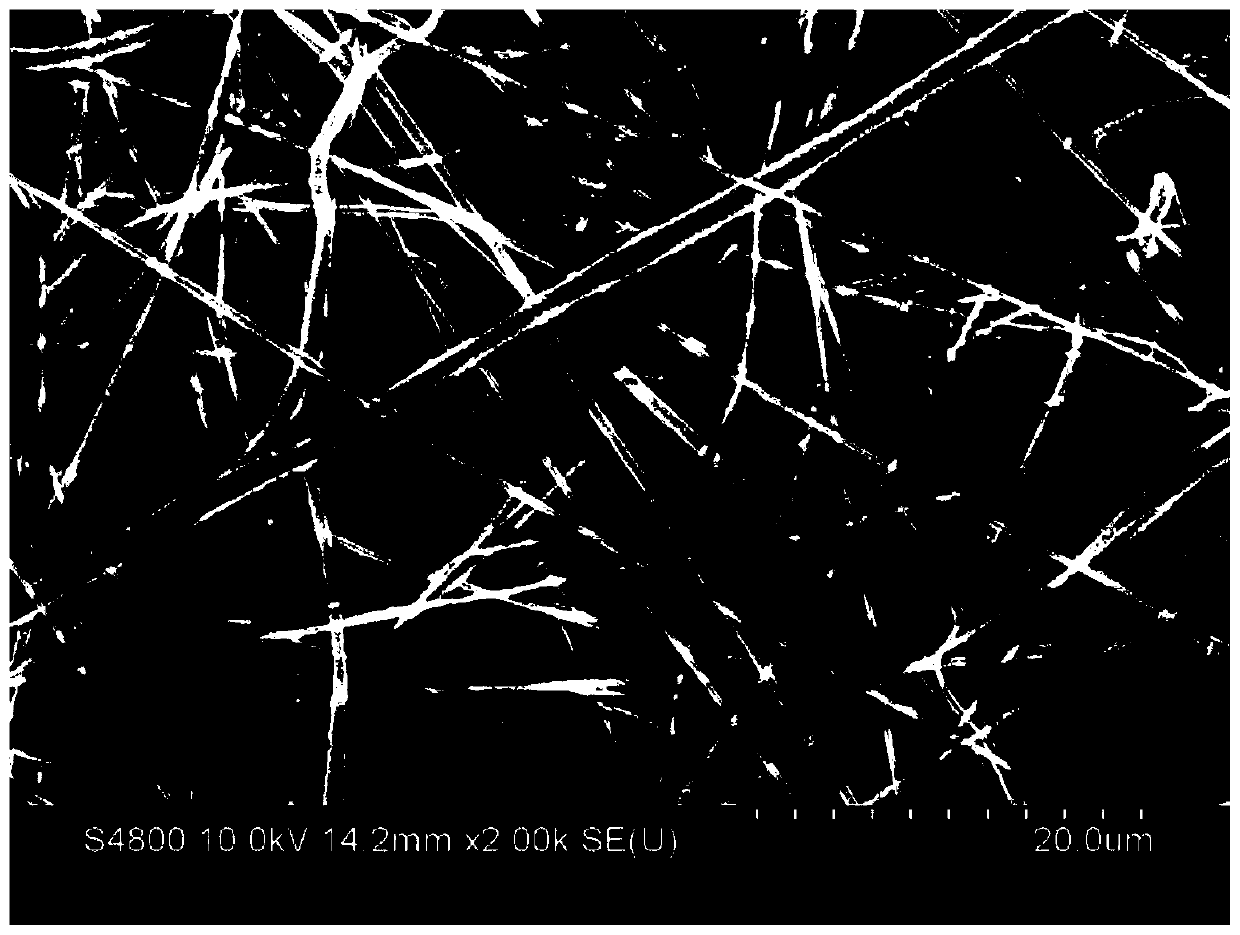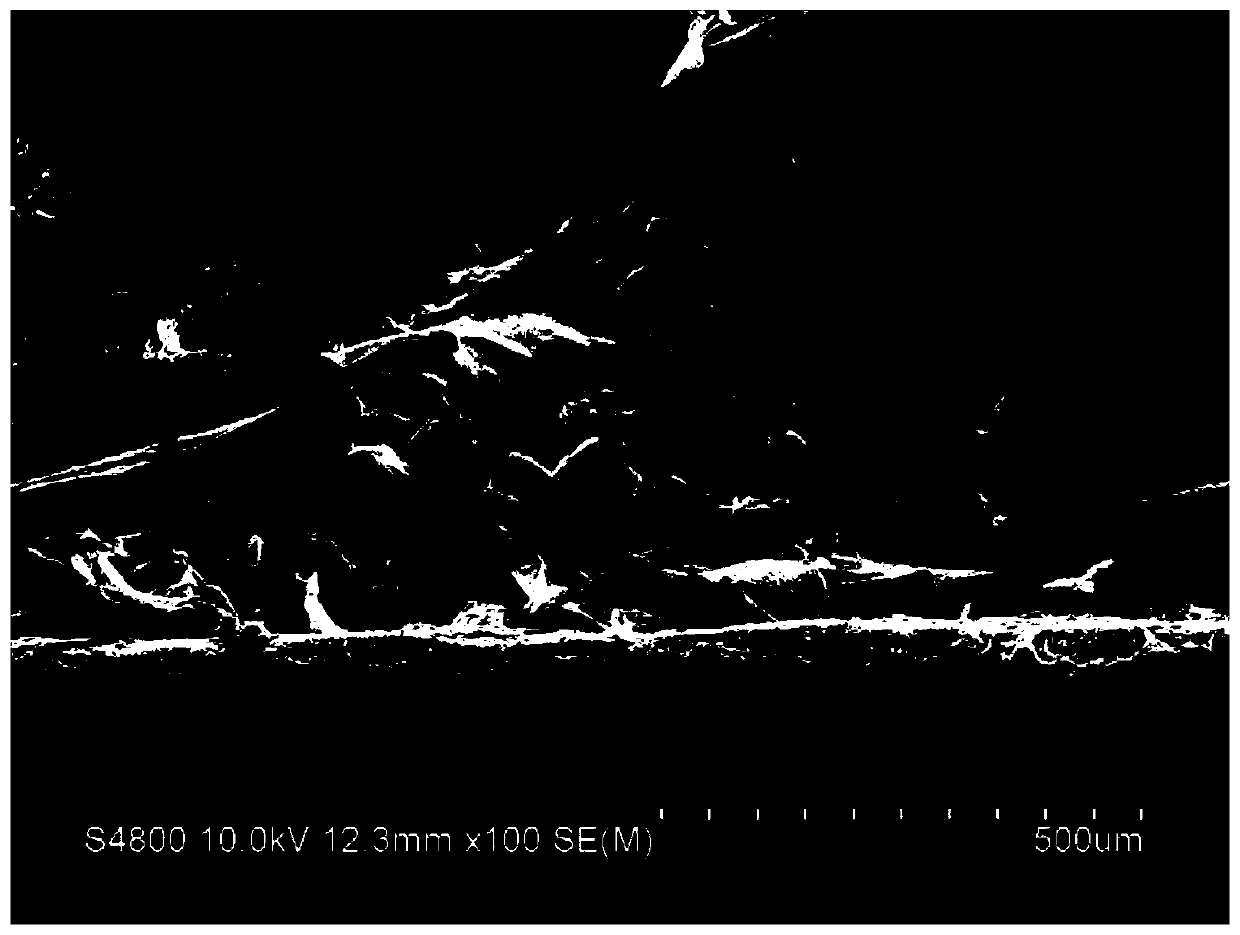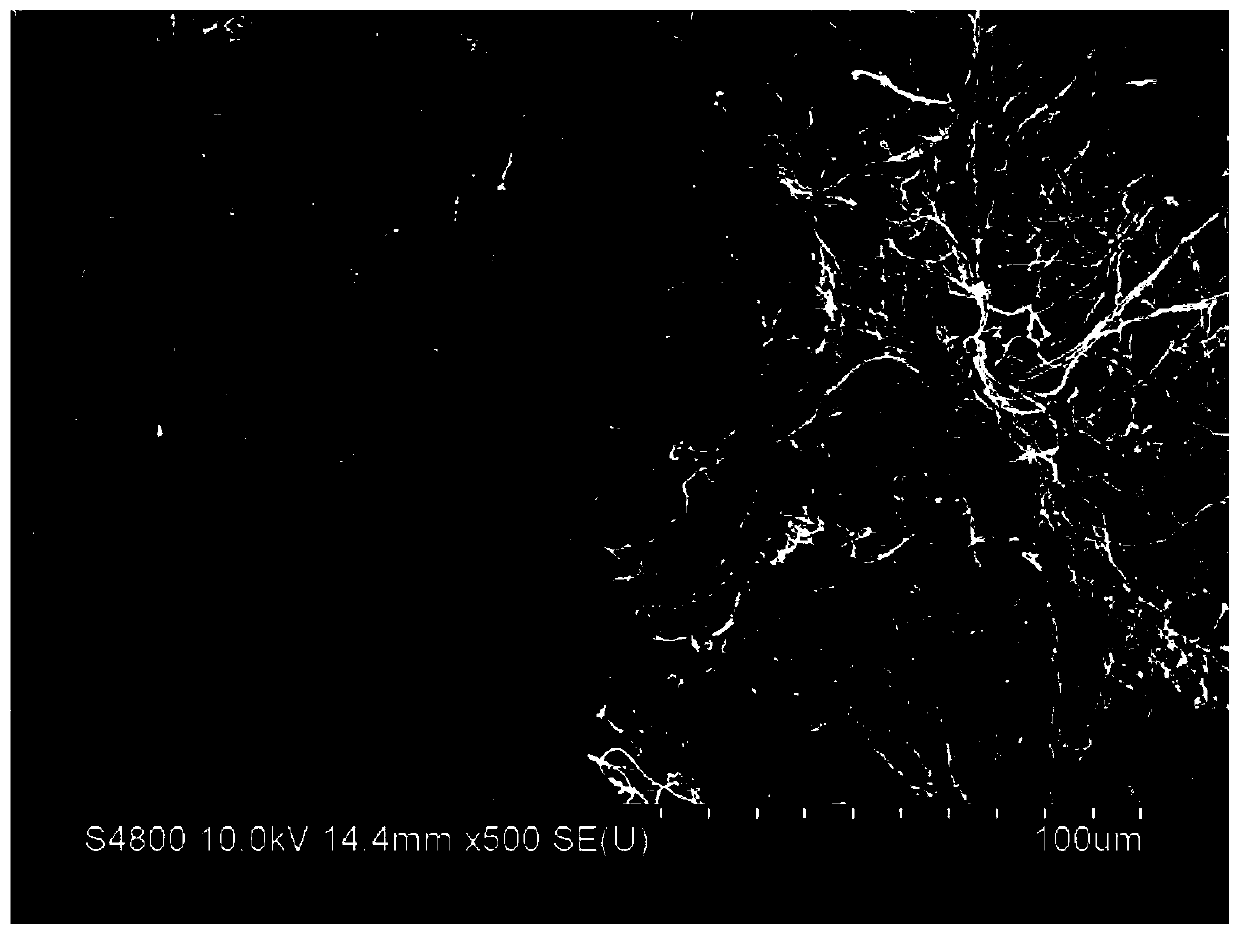Composite nanofiber pad, hydrogel/sponge dressing, preparation method and application
A technology of composite nanofibers and hydrogels, applied in the field of medical materials, can solve problems such as weak fiber strength, and achieve the effect of overcoming weak strength, facilitating adhesion and improving strength
- Summary
- Abstract
- Description
- Claims
- Application Information
AI Technical Summary
Problems solved by technology
Method used
Image
Examples
Embodiment 1
[0045] Preparation of composite nanofiber mats
[0046] (1) Preparation of decellularized matrix. Take 20m of pig-derived skin tissue 3 , cut into small pieces, washed with warm water, soaked in 3% tritonX-100 for 12 hours, washed with deionized water for 15 minutes three times, treated with 4% sodium deoxycholate solution for 24 hours, washed with deionized water Neat for 15 minutes three times, vacuum freeze-dry for 2 days, the temperature of the freeze dryer is -50°C, and the pressure is 0.1MPa. Take ethanol / dichloromethane (volume ratio 2:1) equivalent to 10 times the volume of decellularized tissue and organ matrix to degrease the above-mentioned vacuum freeze-dried matrix twice, each time for 1 day, wash with deionized water for 3 each time for 15 minutes, vacuum filtration overnight, vacuum freeze-drying for 2 days, powdered, passed through a 40-mesh sieve and stored at -40°C to obtain the decellularized matrix powder.
[0047] The source of the decellularized matrix...
Embodiment 2
[0051] Preparation of decellularized matrix full-thickness skin repair hydrogel dressing
[0052] (1) Weigh 0.01g of pepsin and mix it into 10ml, and stir in 0.01% hydrochloric acid solution for 30 minutes to obtain a stirred liquid. After the stirring is completed, add 0.1 g of the decellularized matrix powder in Example 1 to the stirred liquid to obtain Digestion solution, continue to stir and digest for 24 hours, add the obtained enzymolysis solution into a centrifuge tube, place the centrifuge tube in a high-speed centrifuge at 30,000rpm, 4°C for 45 minutes at high speed, centrifuge twice, take the supernatant with 0.1 % NaOH to adjust the pH value of the enzymolysis solution to be greater than 8, and then adjust the pH value to 7-7.5 with HCl to obtain a pre-gel solution;
[0053] (2) At 4°C, add 10xPBS to the neutralized pregel solution, apply it to the composite nanofiber mat of Example 1, and place it in a 37°C incubator for 10 minutes to form a gel , to obtain a dece...
Embodiment 3
[0055] Preparation of decellularized matrix full-thickness skin repair sponge dressings
[0056] Weigh 0.01 g of pepsin, mix pepsin into 10 ml of 0.01% hydrochloric acid solution and stir for 30 minutes, add 0.1 g of the decellularized matrix powder of Example 1 after the stirring is completed, to obtain a digestive solution, continue stirring and digesting for 24 hours, Add the obtained lysate into a centrifuge tube, place the centrifuge tube in a high-speed centrifuge, centrifuge at 30,000 rpm and 4° C. for 45 minutes, centrifuge twice, and adjust the pH value of the lysate to 7 with 0.1% NaOH. The obtained lysate was coated on the composite nanofiber mat of Example 1, and vacuum freeze-dried at -50° C. and 0.1 Pa for 3 days to obtain a decellularized matrix full-thickness skin repair sponge dressing.
[0057] In other embodiments of the present invention, the preparation of the decellularized matrix full-thickness skin repair sponge dressing can also be prepared by the foll...
PUM
 Login to View More
Login to View More Abstract
Description
Claims
Application Information
 Login to View More
Login to View More - R&D
- Intellectual Property
- Life Sciences
- Materials
- Tech Scout
- Unparalleled Data Quality
- Higher Quality Content
- 60% Fewer Hallucinations
Browse by: Latest US Patents, China's latest patents, Technical Efficacy Thesaurus, Application Domain, Technology Topic, Popular Technical Reports.
© 2025 PatSnap. All rights reserved.Legal|Privacy policy|Modern Slavery Act Transparency Statement|Sitemap|About US| Contact US: help@patsnap.com



